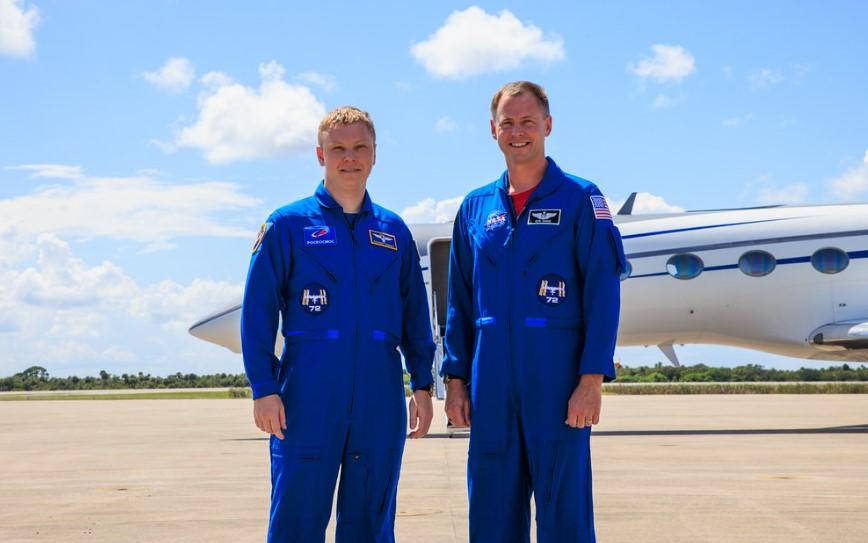
The pared-down crew slated to fly to the International Space Station arrives at Kennedy Space Center on Sept. 21. Cosmonaut Aleksandr Gorbunov (left) and NASA’s Nick Hague will join two NASA astronauts who transferred from the Boeing Starliner flight test for a six-month mission.
Launch of the next U.S. crew transport to the International Space Station (ISS) is being delayed until no earlier than Sept. 28 due to an expected large hurricane, which is forecast to make landfall on Florida’s west coast on Sept. 26.
Ahead of the storm, which is expected to bring high winds and rain across the 150-mi.-wide peninsula, NASA and SpaceX on Sept. 24 conducted a practice dress rehearsal for launch at Cape Canaveral SFS Space Launch Complex 40. The launch will be the first crewed flight from SLC-40, which has been used for Falcon 9 launches since the booster’s debut in June 2010.
All previous SpaceX crewed flights—nine for NASA and five private charters—launched from Kennedy Space Center’s Launch Complex 39A. For greater operational flexibility, SpaceX last year built an access arm at SLC-40.
Just two crewmembers will be aboard for the SpaceX Crew-9 launch, as the other two crew are already aboard the ISS. Barry “Butch” Wilmore and Sunita "Suni" Williams transferred from the Boeing CST-100 Starliner flight test to the ISS crew after NASA decided to return their spacecraft uncrewed due to safety concerns.
Wilmore and Williams will join NASA astronaut Nick Hague and Russian cosmonaut Aleksandr Gorbunov for Crew-9’s return trip home in February.
Another launch of note this week is a Mitsubishi Heavy Industries H-IIA mission to deliver Japan’s Information Gathering Satellite Radar 8 (IGS-Radar 8) from the Tanegashima Space Center.
Mitsubishi completed production of its final H-IIA core stage on Sept. 25. The booster has been in operation since 2001. The H-IIB was added in 2013 and retired in 2020. The successor H3 had an unsuccessful debut flight in March 2023 and two successful missions this year.





